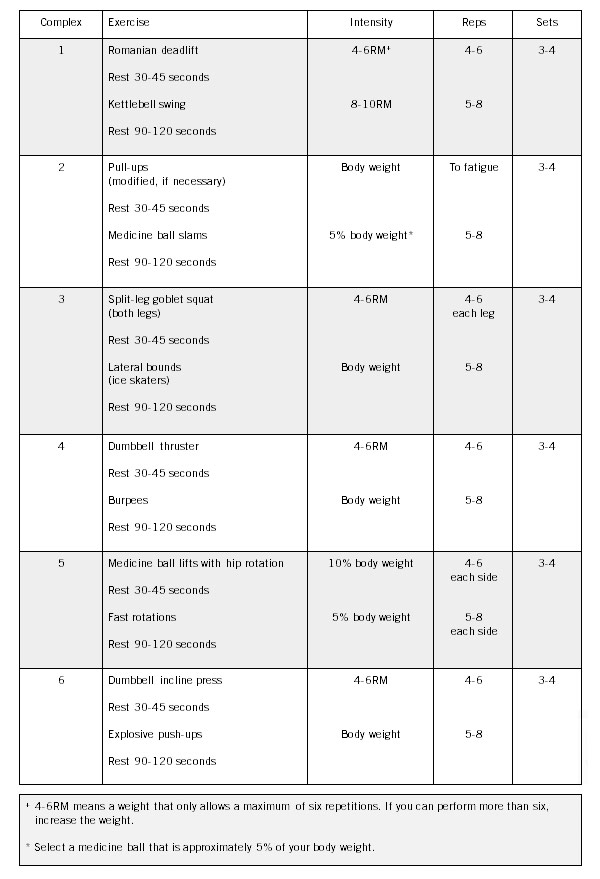Strength training can be the key to unlocking the full potential of athletes looking to take their performance to the next level. Strength training not only helps athletes increase their power and speed, but also helps them reduce injury risk and increase overall physical and mental health. Through proper strength training, athletes can maximize their performance, reach their goals and stay safe while doing so. This article will explore the importance of strength training for athletes and discuss the benefits of engaging in this type of physical activity.
Benefits of Strength Training for Athletes

Strength training is essential for athletes of all levels looking to improve their performance. Not only does strength training increase muscle mass, strength, and power, it also improves balance, agility, and coordination. These benefits can help athletes become more competitive by improving their overall performance in their respective sport. Strength training also helps athletes reduce the risk of injury by increasing the strength and stability of the muscles, tendons, and ligaments. Furthermore, strength training helps athletes recover from injury and improves endurance, allowing them to take on longer or more intense workouts. Strength training is an important part of any athlete’s training regimen. It helps to build physical strength and power, improve balance and coordination, and reduce the risk of injury. Additionally, strength training can increase mental focus and reduce fatigue, allowing athletes to push themselves further in their training sessions. Strength training can also help athletes to increase their aerobic and anaerobic capacity, allowing them to perform at their peak for longer periods of time. Strength training is essential for any athlete looking to reach their peak performance level.
How Strength Training Enhances Athletic Performance

Strength training is a critical component of any athlete’s training regimen. Not only does it help develop and maintain muscular strength, it can also improve performance in any sport. Strength training plays an important role in helping athletes build muscle, increase power, improve balance and stability, and increase speed and agility. There are several ways that strength training can improve athletic performance. One way strength training can improve athletic performance is by increasing an athlete’s power. Power is the ability to move quickly and with force and is essential for explosive performance in sports such as football, soccer, basketball, and track and field. Strength training can help athletes develop the muscles necessary for explosive movements. Another way strength training can help athletes is by improving balance and stability. Many sports require athletes to be able to quickly and accurately change direction, move around obstacles, and remain balanced while performing complex movements. Strength training can help athletes develop the muscles and coordination necessary to perform these tasks. Strength training can also help athletes improve speed and agility. Speed and agility are key components of any sport, and strength training is a great way to build the muscles necessary for quick and precise movements. Strength training can also help athletes build the endurance necessary for long periods of activity
Strength Training Exercises and Programs for Athletes

Strength training exercises and programs for athletes are an important part of any successful athletic performance. Strength training helps athletes improve their performance in all sports, from basketball to volleyball, and from swimming to gymnastics. It helps athletes develop strength, power, and speed, which are all important for success in any sport. Strength training can also help reduce the risk of injury, which is particularly important in high impact sports. When creating strength training exercises and programs for athletes, it is important to consider the sport and the athlete’s individual needs. Strength training exercises should focus on building muscle as well as improving balance, flexibility, and coordination. Strength training programs should include exercises that target specific muscles and muscle groups, as well as compound exercises that work multiple muscle groups at once. Reps and sets should be tailored to the athlete’s level of fitness and vary depending on the sport and the athlete’s goals. It is important to remember that strength training is just one part of a comprehensive athletic training program. Strength training should be combined with aerobic and anaerobic conditioning, as well as proper nutrition and rest. By taking a holistic approach to training, athletes can maximize their performance and reduce the risk of injury.
Understanding the Risks of Strength Training

Strength training is an essential part of any athletes training program as it helps build strength, power, and speed. However, it is important to understand the risks associated with strength training in order to prevent any injuries. By understanding the risks, athletes can ensure that they are working safely and effectively, and will be able to reach their goals without any setbacks. One of the main risks associated with strength training is the risk of injuries. Strength training can be a very intense physical activity, and as such, athletes need to ensure that they are using proper form and technique in order to prevent any injuries. Additionally, it is important to make sure that athletes are lifting weights that are appropriate for their level and ability, as lifting too much weight can also lead to injuries. Another risk associated with strength training is the risk of overtraining. Overtraining can lead to fatigue, muscle soreness, and even injury. It is important for athletes to be aware of the signs of overtraining, such as fatigue and soreness, and take action to avoid it. This can include taking rest days, varying the intensity of workouts, and listening to the body. By understanding the risks associated with strength training, athletes can ensure that they are training safely and
Tips for Incorporating Strength Training into an Athlete’s Regimen

Strength training is an important part of any athlete’s regimen. It can help strengthen and tone muscles, build endurance, and improve coordination and balance. It can also reduce the risk of injury. To maximize the benefits of strength training, there are several tips that athletes should follow. First, it is important to properly warm up before beginning any strength training exercises. This helps reduce the risk of injury, as well as improve performance. Stretching and light aerobic activity are ideal ways to warm up before beginning a strength training routine.Second, it is important to focus on form rather than on weight to avoid injury. Proper form is essential to ensure that the exercises are done correctly and safely. It is also important to start with lighter weights and gradually increase the amount of weight used. Third, athletes should incorporate different types of exercises into their strength training routine. This will help ensure that all the major muscle groups are being worked, leading to better overall results. Fourth, athletes should also focus on consistency and make sure that they are doing strength training exercises regularly. It is important to keep up with strength training even on days when they are not playing their sport as this will help maintain muscle strength and endurance. Finally




